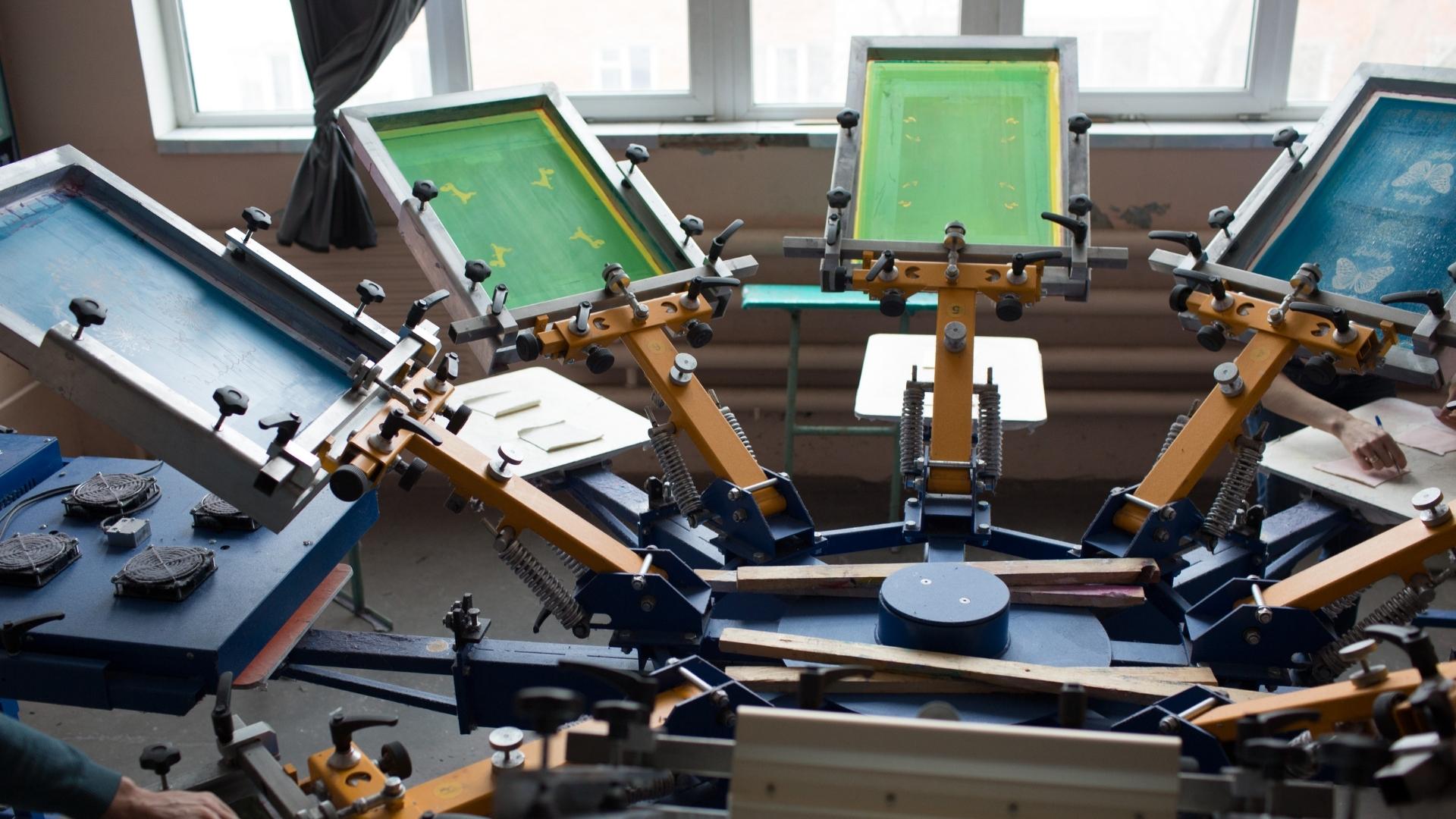The Crucial Overview to Understanding Screen Printing and Its Versatile Makes use of
Screen printing has an abundant background that goes back to old times, developing into a sophisticated strategy made use of across various sectors today. This guide checks out the complexities of the screen printing process, detailing its applications in fashion, advertising and marketing, and home style - 10:9 Design Abilene. Recognizing these fundamentals can open up innovative potential for both business and imaginative tasks. The following sections will certainly reveal vital pointers and methods to enhance one's screen printing ventures
The Background of Screen Printing
Although screen printing has roots that trace back centuries, its advancement mirrors the imaginative and technological advancements of different cultures. Coming from old China, the technique was initially used for embellishing textiles and later infect Japan, where it became essential to Ukiyo-e woodblock printing. The method shifted to Europe in the 18th century, where it obtained popularity among craftsmens and commercial printers. The creation of photo emulsion in the 20th century reinvented screen printing, permitting more detailed designs and higher performance. Musicians like Andy Warhol even more drove its popularity, utilizing the tool to develop renowned works that combined commercialism and art. By the late 20th century, screen printing had established itself as a flexible strategy, used in vogue, marketing, and art. Today, it proceeds to evolve, integrating digital innovation and increasing its applications throughout various industries.
The Screen Printing Process Explained
Screen printing transforms creative visions right into substantial layouts via a series of accurate steps. A photo is created and then moved onto a screen, commonly made of great mesh fabric stretched over a frame. A light-sensitive solution is put on the screen, which is revealed to light, hardening in areas not covered by the picture. After cleaning out the unhardened solution, a pattern is formed.
Next, the screen is put over the substratum, whether it be textile, paper, or an additional product. Ink is after that pressed with the open areas of the stencil utilizing a squeegee, depositing the layout onto the substratum listed below. This process can be repeated for numerous shades, requiring separate displays for every shade. Lastly, the printed item is healed using heat to guarantee the ink sticks effectively, causing a resilient, dynamic design on-line.
Sorts Of Screen Printing Techniques

Additionally, specialty techniques, such as discharge screen printing, eliminate color from the fabric to produce softer prints, while foil screen printing applies metallic aluminum foil to achieve a glossy finish (10:9 Design near me). Each strategy supplies distinct characteristics, dealing with different innovative requirements and production ranges, inevitably expanding the possibilities within the screen printing domain
Applications of Screen Printing in Various Industries

Additionally, the signs and advertising and marketing sectors make use of screen printing for developing attractive screens and banners. This approach permits strong colors and elaborate styles that capture attention. In electronics, screen printing is used for using conductive inks to circuit boards, essential for component connections. Moreover, the home decoration market welcomes screen printing to create distinctive styles on fabrics and wall art. In general, screen printing serves as a critical device across diverse areas, improving products with personalized and aesthetically attractive graphics.
Tips for Successful Screen Printing Projects
While undertaking a screen printing job, careful attention to detail can considerably improve the final outcome. First, choosing top notch materials is crucial; this includes the screen, inks, and substrates. Making use of suitable mesh matters can influence ink deposition and information resolution. Preparation is similarly crucial; thorough cleaning of screens and correct exposure times guarantee crisp prints.
Next, precise registration is essential for multi-color prints. Utilizing alignment tools can help attain specific layering. Furthermore, screening prints on scrap products before manufacturing assists recognize possible concerns without squandering sources.

Often Asked Inquiries
What Materials Are Finest for Screen Printing on Fabric?
Cotton and polyester blends are suitable for screen printing on material as a result of their durability and ink absorption. Additionally, specialty materials like silk or canvas can generate distinct structures and coatings, enhancing the general style top quality.
How Do I Clean and Maintain Screen Printing Devices?
To cleanse and maintain screen printing tools, one need to on a regular basis clean screens with suitable solvents, check mops for wear, oil moving parts, and store all products in a completely dry, dust-free setting to prolong their lifespan.
What Are the Environmental Influences of Screen Printing?
Screen printing can have substantial environmental effects, consisting of chemical waste from inks and solvents, water usage during cleansing procedures, and power intake. Eco-friendly materials and sustainable methods are essential for reducing these unfavorable impacts.
Can Screen Printing Be Done in the house Properly?
Screen printing can be efficiently done at home with the best materials and strategies. Enthusiasts can develop quality prints, though success depends upon their click here ability degree, equipment, and understanding of the process entailed.
What Are the Prices Associated With Beginning a Screen Printing Organization?

Beginning a screen printing company involves expenses for tools, products, and work space. Initial expenses normally vary from a few hundred to a number of thousand dollars, depending upon the range, top quality of machinery, and wanted production ability.
Screen printing has a rich background that dates back to old times, developing right into a sophisticated technique made use of across numerous markets today. An additional method, rotary screen printing, uses cylindrical displays, helping with constant printing on fabric rolls, consequently enhancing efficiency for large productions. Additionally, specialty methods, such as discharge screen printing, get rid of dye from the textile to produce softer prints, while foil screen printing uses metal aluminum foil to accomplish a glossy finish. In the style sector, screen printing is commonly used to produce vivid designs on clothing, enabling brand names to showcase their distinct designs. Cotton and polyester blends are suitable for screen printing on material due to their resilience and ink absorption.